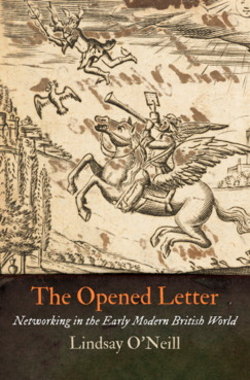The Opened Letter

Реклама. ООО «ЛитРес», ИНН: 7719571260.
Оглавление
Lindsay O'Neill. The Opened Letter
Отрывок из книги
The Opened Letter
Peter C. Mancall, Series Editor
.....
The voices of Nicholas Blundell, Cassandra and James Brydges, Peter Collinson, Hans Sloane, William Byrd (father and son), and John Perceval reverberate through this book. But theirs are not the only letters that speak. Many of these collections included incoming letters, which allow the voices of their correspondents to come through loud and clear. Friends and relatives, like philosopher George Berkeley, Perceval’s great friend, and John Custis, Byrd the younger’s brother-in-law, become as familiar as the main correspondents. The pen of Margaret Ray, the wife of one of Sloane’s good friends, scratches loudly, as do those of Lady Petre, Peter Collinson’s patron, and Helena le Grand, Perceval’s witty cousin. We hear from those who were not members of the British elite, as the voices of John Perceval’s tenants, James Brydges’s employees, and William Byrd (I & II)’s factors and ship captains echo through their letters. Within these sets of correspondence vibrant, expansive, and elaborate networks hum with life.
The letters these writers preserved provide the raw materials to reconstruct the networks they nurtured. The form in which letters survived helps and complicates this process. Perceval, the two Byrds, James and Cassandra Brydges, and Blundell all kept letter books. These individuals chose to transcribe and retain these sets of letters. Their books tell the story of their businesses, financial affairs, government posts, and personal lives that they wished or needed to keep. Within them lay traces of their chosen networks. John Perceval, William Byrd, II, James Brydges, and Nicholas Blundell also kept diaries, which often provide a glimpse of their local networks and place their letter writing activities in a larger context. But correspondents did not place all their letters into letter books. Autograph letters, like those that make up the bulk of Sloane’s correspondence, might speak with less authority about the favored networks of their writers, but they whisper important secrets about how they wrote and sent their letters. Autograph letters often contain a scribbled address, a postmark, or a disintegrating seal that still clings to the paper. The vast letter collection of the earls of Huntingdon holds many of these broken seals and scrawled addresses. The letters of the earls, their families, and those connected to them survive in bulk and usually in autograph form from the late fifteenth century into the late nineteenth century. The early letters of this family, from 1600 through the later seventeenth century, reveal the placement of seals, the wording of early addresses, and how and when their writers turned to the postal system after its introduction.66 These autograph letters sing in a way their copied siblings cannot. They show the material reality of these letters. You can measure how much space the writers left between their salutations and the bodies of their letters, you can see where writers placed their postscripts, and you can evaluate the neatness of their hands. Their addresses and postmarks suggest how letter writers sent their epistles. Both kinds of letters, those enshrined in letter books and those surviving in their original state, have a place in this work for both, in complementary ways, reveal the workings of the epistolary world.
.....